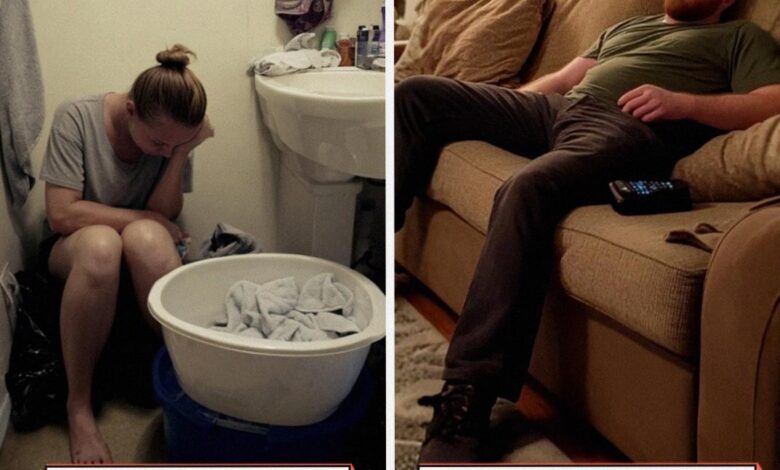Target to Close Stores in Response to Rising Theft and Retail Crime!

Target has announced the closure of nine stores across four states, a move driven by an alarming rise in theft and organized retail crime that has cost the company millions and endangered employees. Despite major investments in enhanced security and deterrence measures — from surveillance systems and additional guards to partnerships with local law enforcement — Target admitted that the wave of retail theft has reached a level that’s simply unsustainable.
For years, the company had been a fixture in many urban and suburban communities, providing jobs and accessible goods to families. But in 2025, organized theft rings have become more sophisticated, with coordinated shoplifting incidents and reselling networks creating significant losses. Target executives said they could no longer justify keeping certain high-risk stores open when both staff safety and profitability were on the line.
The affected stores span four states: California, Oregon, New York, and Washington. Cities like San Francisco, Portland, Seattle, and New York City — once considered prime urban markets — have faced a surge in theft-related incidents in recent years. Employees at several of these locations described feeling unsafe during closing shifts and witnessing aggressive behavior from organized shoplifters who operated with impunity. Many of these incidents were captured on viral videos, highlighting how brazen the problem had become.
Target has not taken this decision lightly. Over the past two years, the retailer had poured millions into theft-prevention technologies, including electronic product locks, improved camera systems, and specially trained security staff. The company also introduced controlled store entry, limited self-checkout, and reduced evening hours in high-risk areas. However, even these measures failed to curb escalating theft trends.
Brian Cornell, Target’s CEO, said in a statement that while the company is committed to serving communities, “we cannot operate stores where the safety of our team members and guests is at risk.” He emphasized that theft and violence had reached levels that forced corporate leadership to make difficult choices to protect employees and customers.
The closures are not just a corporate issue — they carry deep community consequences. Residents in affected neighborhoods expressed frustration and sadness, noting that Target was one of the few major retailers still operating in their area. “We already lost the grocery store down the street last year,” said one Seattle resident. “Now with Target closing, there’s nowhere nearby to shop for essentials.”
Economists warn that this trend could create “retail deserts” in major cities — areas where theft and vandalism drive businesses away, leaving behind empty buildings and fewer job opportunities. Target’s decision may also embolden other major chains to follow suit. In recent years, Walmart, Walgreens, and CVS have all shuttered stores in high-crime zones, citing similar reasons.
Target executives confirmed that affected employees would be offered transfers to nearby stores where possible, or severance packages if relocation wasn’t feasible. The company pledged to support those workers through the transition but acknowledged the difficulty of such closures on both a personal and economic level.
Law enforcement agencies have been grappling with how to respond. Organized retail theft often falls into a gray area — individual incidents may seem minor, but the cumulative effect is massive. Local police departments say that even when arrests are made, offenders are often released quickly, and stolen goods are easily funneled through online marketplaces.
Industry experts believe that without stronger legal consequences for theft rings, the problem will continue to grow. “We’re not talking about petty shoplifting anymore,” said retail analyst Mark Randall. “These are professional operations with getaway drivers, online resellers, and coordinated hits on multiple stores. It’s an industry-wide crisis.”
To combat the problem, retailers have begun lobbying for new federal and state laws that increase penalties for organized theft and regulate the resale of stolen goods online. Some states have already passed measures requiring online sellers to verify their identities before listing bulk products — a move aimed at cutting off the flow of stolen merchandise to secondary markets like eBay and Facebook Marketplace.
Still, for the communities losing their Target stores, such measures come too late. In Portland, employees stood in tears as the store closed its doors for the final time. In Brooklyn, customers gathered outside to express disappointment, noting that Target had been one of the few large stores still thriving in their neighborhood.
One longtime shopper summed up the sentiment: “It’s not just about losing a place to buy things — it’s losing a sense of stability. When big stores leave, it feels like the city gives up on you.”
The closures mark a sobering moment for the retail industry, which is increasingly caught between customer expectations and the harsh realities of safety and security. As more stores weigh the risks of remaining open in high-crime zones, a difficult question looms over corporate America: how do you balance community service, employee protection, and profitability in an era of unprecedented theft?
For Target, this decision may protect the bottom line in the short term, but it leaves behind a growing void in the communities it once anchored. Whether law enforcement and policymakers can reverse this trend remains to be seen — but for many families and workers, the damage has already been done.